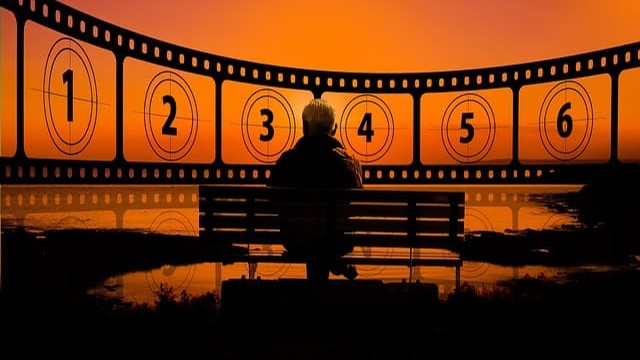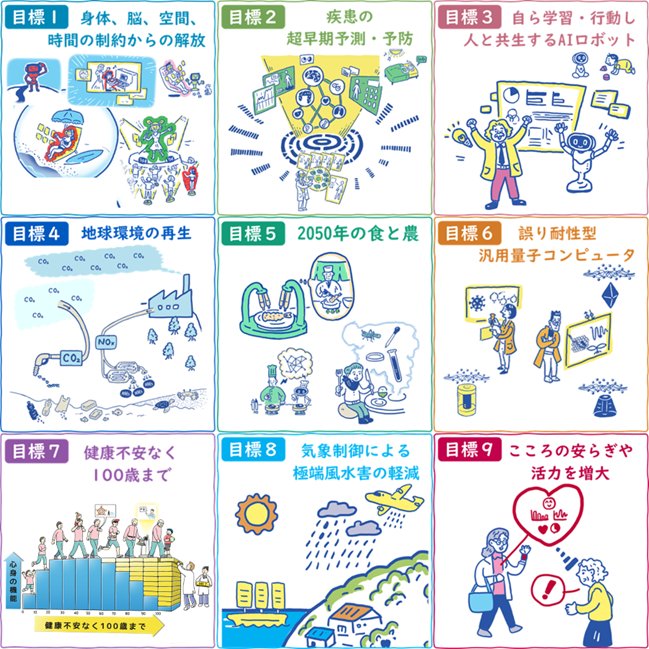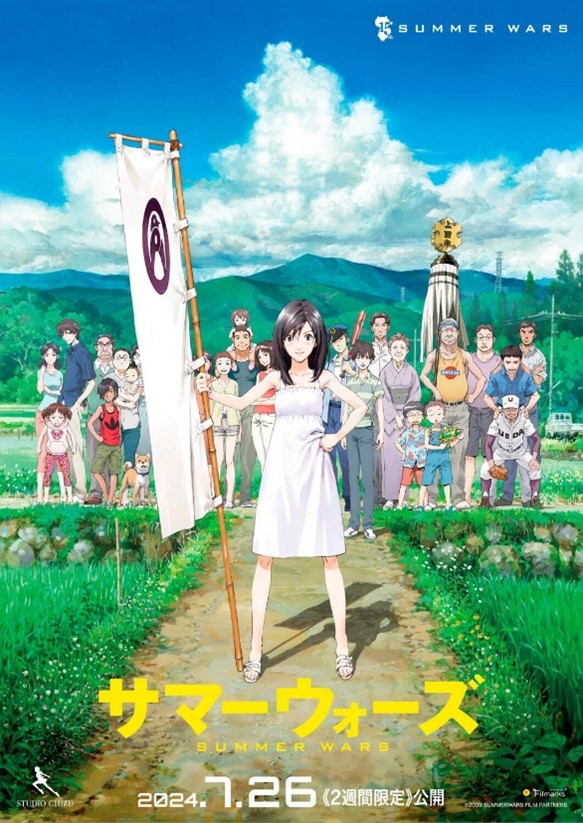Future Goals of the Real World and the Future as Seen in Film Works

When selecting a company to invest in, many people may take “whether or not it is a national policy” as an indicator. This is because it is highly likely that the company has a vision for the project and can expect support from the government. In this blog, I would like to read about the future vision from the perspective of national policy and its implications for social issues depicted in films, while taking into account the flow of technological innovation.
According to Hiroshi Harashima, the transition of the Industrial Revolution is as follows [Harashima 2024].
(1) Power Revolution (19th century to early 20th century): Transportation, iron and steel industry, heavy chemical industry, materials industry
(2) Electronics Revolution (late 20th century): semiconductors, electronics, and high-tech industries
(3) Information Revolution (late 21st century-): building social and cultural infrastructure on networks
People have believed that the more convenient things become, the more they can focus on more essential activities. Of course, the advent of home appliances has reduced the burden on housewives (househusbands), and this has allowed them to spend more time with their family and friends. However, this is not always the case. A familiar example is the invention of electricity. With the invention of electricity, work is now possible even at night as long as the lights are on, and Tokyo is even called the city that never sleeps. It was believed that technological innovation would free up time for human activity, but instead the time for activity has increased and the time for rest has decreased. In addition, the completion of the Shinkansen bullet train just before the 1964 Tokyo Olympics made it possible to take a one-day trip to Osaka instead of the two days. Would businessmen say that this has eased their burden? If a two-day trip could be completed in one day, and the remaining two days could be rested, it would be a “reduction in workload,” but in reality, this is not the case. It is also highly recognized that when convenience permeates society, competition becomes more and more intense.
The Cabinet Office has given each era the name Society○.
Society1.0 “hunting society”
Society2.0 “Agricultural Society”
Society3.0 “Industrial Society”
Society4.0 “Information Society”
Society5.0 is a vision of the future society that was first proposed in the Fifth Science and Technology Basic Plan approved by the Cabinet in January 2016 as a vision of the future society that Japan should aim. It is a human-centered society that balances economic development and the resolution of social issues through a highly integrated system of cyberspace (virtual space) and physical space (real space).
The following is an explanation of the “development of human resources to support a new society.”
In the era of Society 5.0, it is important to have abilities and qualities that can be acquired through exploratory activities to discover issues and seek solutions on their own. There is a need to produce human resources who can create new value for the world, and to realize an education and human resource development system that will make this possible. [Cabinet Office]
I would like to look again at the “moonshot goals” proposed by the Cabinet Office in this Society 5.0.
<Moonshot Goals>
・Goal 1
Realization of a society in which human beings can be free from limitations of body, brain, space, and time by 2050.
・Goal 2
Realization of ultra-early disease prediction and intervention by 2050.
・Goal 3
Realization of AI robots that autonomously learn, adapt to their environment, evolve in intelligence and act alongside human beings, by 2050.
・Goal 4
Realization of sustainable resource circulation to recover the global environment by 2050.
・Goal 5
Creation of the industry that enables sustainable global food supply by exploiting unused biological resources by 2050.
・Goal 6
Realization of a fault-tolerant universal quantum computer that will revolutionize economy, industry, and security by 2050.
・Goal 7
Realization of sustainable care systems to overcome major diseases by 2040, for enjoying one’s life with relief and release from health concerns until 100 years old.
・Goal 8
Realization of a society safe from the threat of extreme winds and rains by controlling and modifying the weather by 2050.
・Goal 9
Realization of a mentally healthy and dynamic society by increasing peace of mind and vitality by 2050.
・Goal 10
Realization of a dynamic society in harmony with the global environment and free from resource constraints, through diverse applications of fusion energy, by 2050
(Figure 1:Moonshot Goals)

(Reference:Cabinet Office)
As far as Goal 1 is concerned, the declining birthrate, which is the first and foremost serious social problem in our country, can be seen as an indication of a “avatar society”, in which the ability and quality per person is increased or copies of competent people are made, rather than a direct solution to this problem. Also, goal 2 is a seemingly beautiful pull. From the viewpoint of eugenics, if it indicates the promotion of “designer babies,” the ultimate means of creating only competent people, it also raises even more serious religious issues of medical ethics and rejection of technologies such as genetic modification.
To take up the “almost all actions and experiences via avatars by 2040,” the 1999 film “The Matrix” depicts the merging of the human and computer worlds; the rapid progress of VR is remarkable. Technology is being developed to enable game progression by following the scent of prey. The fusion of the virtual and the real is gradually taking place even in our immediate surroundings. In January 2024, Elon Musk’s Neuralink, which is developing a brain-computer interface (BCI), was the first to apply a proprietary brain implant to a human patient, Elon Musk revealed this in a post to X. Are these two events unrelated?
Another one of the classic summer vacation movies is Mamoru Hosoda’s “Summer Wars,” which was released in 2009. In this film, the main character struggles in both the real world and the virtual one to stop the rampage of an artificial intelligence “love machine” in a virtual space society called Oz, where avatars of the main character can use their own avatars. (On the 15th anniversary of its release, the film will be screened nationwide for two weeks only from July 26, 2024.) The development of the film in an environment where virtual space and the real world are fused together seems to suggest society as it exists today in 2024.
(Figure 2:Poster of the film“Summer Wars”)

(Reference:Studio Chizu)
Taking these moonshot goals into account, the big rise in stocks of AI technology-related companies would have been predictable to some extent. The recently discussed growth of “NVIDIA, to become the world’s largest company” was also within the scope of prediction. In addition, cybernetic avatars, a concept that includes ICT and robotics technologies that extend the physical, cognitive, and perceptual capabilities of humans in addition to robots that take the place of flesh-and-blood humans and avatars that show 3D images, etc., is attracting attention, and Japan’s strengths in robotics can be seen. The areas of strength related to robotics in Japan are in the fields of “tele-existence,” “haptics,” and “soft robotics,” which connect the virtual and the real. These fields are expected to develop at an accelerated pace in the future.
It is said that the high possibility for one person to create 10 avatars for one task by 2030, and each person can perform 100 tasks by around 2040, and each person can control 1000 avatars by 2050. Even if Japan’s declining birthrate and aging population will peak around 2040, and due to population decline, our country’s population in 2050 will be the population of Japan peaks at 90 million in 2040 and further climate change makes life in the real world difficult, life in the virtual world will be comfortable. The result of the search for adaptive methods, rather than fundamental solutions to social problems, will be the expansion of frontiers through science and technology.
What then are the prospects for society in the future? As discussed in the copyright issue, the rise of AI is making it possible for anyone to generate high-quality texts and images. This is truly “liberation from labor”. In this situation, the generation itself is no longer valuable, but the manipulation of these images, in other words, the “thinking that can create new ways to use them,” is what is given value. Inevitably, the gap between those who possess such thinking and those who do not is likely to widen rapidly, similar to the rapid growth of GDP since the Industrial Revolution.
The Japanese government is focusing on entrepreneurship education and the creation of startups. I guess that the reason for this may depend on the fact that it can train the “decisiveness” and “judgment” that are the characteristics of people. In other words, we are now in the stage of creating a population that can appropriately judge the results of AI, and that can stand at the top of the so-called social structure and lead society. As a result, those who fail to ride this wave will be exploited as mere “chess piece” at the end of the pyramid structure.
The problem of non-attendance has changed to a trend of developing strengths rather than forcing students to overcome their weaknesses while utilizing the concept of diversity. This may be due to the fact that such difficulties can be covered by AI or by others in the future. In that case, this social change is appropriate and planned. In the future, when human abilities themselves are recognized as valuable, and when the abilities themselves are bought and sold, those who possess these “human” abilities will be able to take a leading position in the social structure. In short, given the possibility of emancipation from the monetary economy, the right to a “wealthy” life, if not directly in terms of “money,” will be granted in some form. On the other hand, those who do not have the right to create their own value can expect to live only on the minimum necessary financial resources such as benefits. It is still fresh in our minds that the 100,000 yen benefit was given in the aftermath of the Corona disaster. When the government planned to free the people from labor and provide them with the minimum necessary goods to survive, the 100,000 yen benefit may have been a harbinger of the future. It is not surprising to think that the government’s desire to abolish paper insurance cards and hasten the spread of the my-number card would lead to this.
The world is filled with video and art works that are said to have been created under inspiration. The film “Gattaca,” released in Japan in 1998 and rated “most plausible sci-fi movie of all time” by NASA in 2011, depicts a near future in which genetically engineered “fittest” people rule society. Vincent, the protagonist, is born naturally and is treated coldly as an “unfit” person. Other films that are said to suggest a future society include “Containment (2011),” “Interstellar (2014),” “Don’t look up (2021),” and “Civil war (2023). Japanese films include Makoto Shinkai’s “Kimi no na wa” (Your Name), “Weather Child” and “Suzume no Dokkiri (2023)”.
Finally, in light of Hiroshi Harashima’s opinion that it is important not only to install but also to uninstall the information environment, a film titled “La Belle Verte”, produced and released in 1996 and directed by French film master Coline Serreau, is a perfect example. The film depicts a “detox” from the society, and shows the crisis of the people of the earth living in a prison-like society.
(Figure 3:Poster of the film“La Belle Verte”)

(Reference:Amazon)
In the video interview, director Coline Serreau says:
“Modern society can be portrayed as giving people the bare necessities of life, telling them only to eat those small amounts of food. The message of the film is to stop this kind of social system.”
I feel that the thoughts and ideas contained in the films and art works that are being produced as entertainment have the potential to represent social issues and not diverge from <a future scenario that will become a reality if things continue as they are> or <a vision of the future society that mankind should move toward in the future>. I would like to think again about the future of myself and society. What do YOU think?
Corporate Planning Group, Maria Tanaka
[References]
・[Harashima 24]Harashima Hiroshi, Hiromu Harashima Lecture Series: Overhead Knowledge, Volume 1: Looking Ahead to the Information Age,” Kousakusha, 2024.
・[Cabinet Office 21] Cabinet Office, Moonshot-type Research and Development System, https://www8.cao.go.jp/cstp/moonshot/index.html, (Accessed 26 June. 2024.)
・[Cabinet Office 21] Cabinet Office, What is Society 5.0, https://www8.cao.go.jp/cstp/society5_0/, (Accessed 26 June. 2024.)



